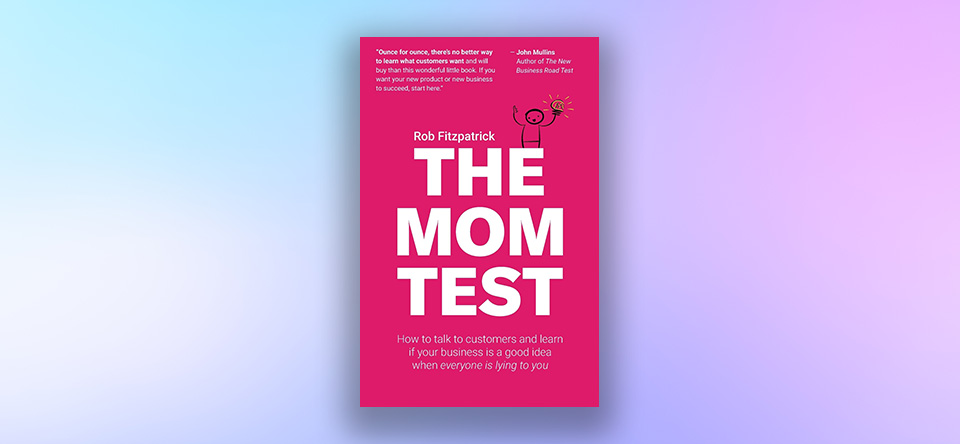Issue 031: How to 10x Your Business & Career by Doing Less
Plus: How to ask for things and get enthusiastic yes and a unique method to validate startup idea

April 23, 2025 | #032 | Free Version
Welcome to Startup Blitz, a weekly newsletter full of timeless ideas and insights you can use in your online business.
👑 How to tell if your business idea is fantastic or terrible
🤳 How to use brand selfies to increase product sales
🧠 How to exploit cognitive biases to increase sales
Not subscribed? Learn more and sign up.
📖 How to Tell if Your Business Idea is Fantastic or Terrible

But how do you know an idea is good or . . . total crap?
You can’t just go out and build the business. Choosing the wrong idea could mean months (or years) of frustration, wasted time, and financial loss.
On the other hand, the right idea can lead you to incredible fame and fortune.
🔍 So before building a business, you need to test and validate your idea. You need to conduct research to see whether there is demand for your product.
The best way to evaluate your idea is very simple: get out of your house, talk to potential customers, and ask them.
But not just any conversation will do. Asking the wrong kind of questions will lead you astray. ⚠️
Why? Because people are naturally kind.
The people you’re talking to in the early days want you to win. You’re a new business. You’re the underdog. They want to help you. And because they want to help you, they’re not going to crap all over your hopes and dreams.
These conversations aren’t just useless. They convince you that you’re on the right path. They give you a false positive which causes you to over-invest your cash and your time.
📥 You can download the action plan from here!
It will show you how to talk to potential customers the right way, and see if there is really a demand for your business.
Don’t waste another day wondering if your idea is a hit or miss. Download the action plan and take the first step toward building something amazing.
Can Brand Selfie Increase Product Sales? 🤳

🔍 Researchers from Germany and Austria studied over 250,000 tweets and Instagram posts featuring products.
⚠️ So before you upload your next image, ask yourself: Is your goal to drive more discussions or more purchases? Then choose the right image for your product page, social media and ads.
5 Dangerously Powerful Cognitive Biases You Can Use to Boost Sales 🧠

1. Anchoring Bias 🎯
The first piece of information we see influences our perception and decision-making. Imagine shopping for a used car. The first deal you like will be used as a comparison point. Anything cheaper feels like a bargain, while anything pricier seems expensive.
To leverage the anchoring bias:
- Present your most expensive offering first. This will make other options seem more affordable.
- When displaying a discount, always put the crossed-out info first in order to put the size of the discount into perspective.
- Highlight the benefit of your product by showing before-and-after comparisons.
2. Scarcity 🕒
To leverage scarcity:
- Do limited-time offers. You’ll create urgency by offering deals that expire within a few hours or days.
- Show the number of items left in stock. If quantities are limited, it’ll prompt faster decisions.
- Restrict availability through waitlists or exclusive invitations. It’ll boost perceived value.
3. Loss Aversion 🛡️
Humans have the tendency to avoid losses over acquiring equivalent gains. Our brains find the idea of losing something we’ve invested time or effort into particularly unpleasant.
To leverage loss aversion:
- When users try to cancel a subscription or stop onboarding, display a pop-up summarising the product’s value to make them reconsider.
- Show accomplishments like streaks, hours spent, or savings achieved with your product. This reinforces the value they’ve already gained and the potential loss if they stop using it.
4. Framing Effect 📣
The way you present information significantly influences how people perceive it. While what you say matters, how you say it can be even more impactful. That’s exactly what messaging and copywriting are all about.
- Instead of just listing features, highlight what your users can achieve with your product. Show how it improves their life.
- Use positive framing. For example, instead of saying “5% fat,” say “95% fat-free”.
- Offer risk-free options. Free trials or money-back guarantees help reduce hesitation and build trust.
5. Bandwagon Effect 👥
A lot of people adopt a behaviour or choice simply because others are doing it. We’re naturally drawn to follow the crowd. We often opt for the most popular option without much hesitation.
- Use labels like “Most Popular” or “Trending Now” to draw attention to products or options favoured by others.
- Encourage customers to share photos of themselves using your product on social media.
- Present the number of people using your product or feature.
Thanks for reading. I hope you have found at least some of these tips helpful.
Until next week!
You are receiving this email because you subscribed to Startup Newsletter. You can Unsubscribe from here.